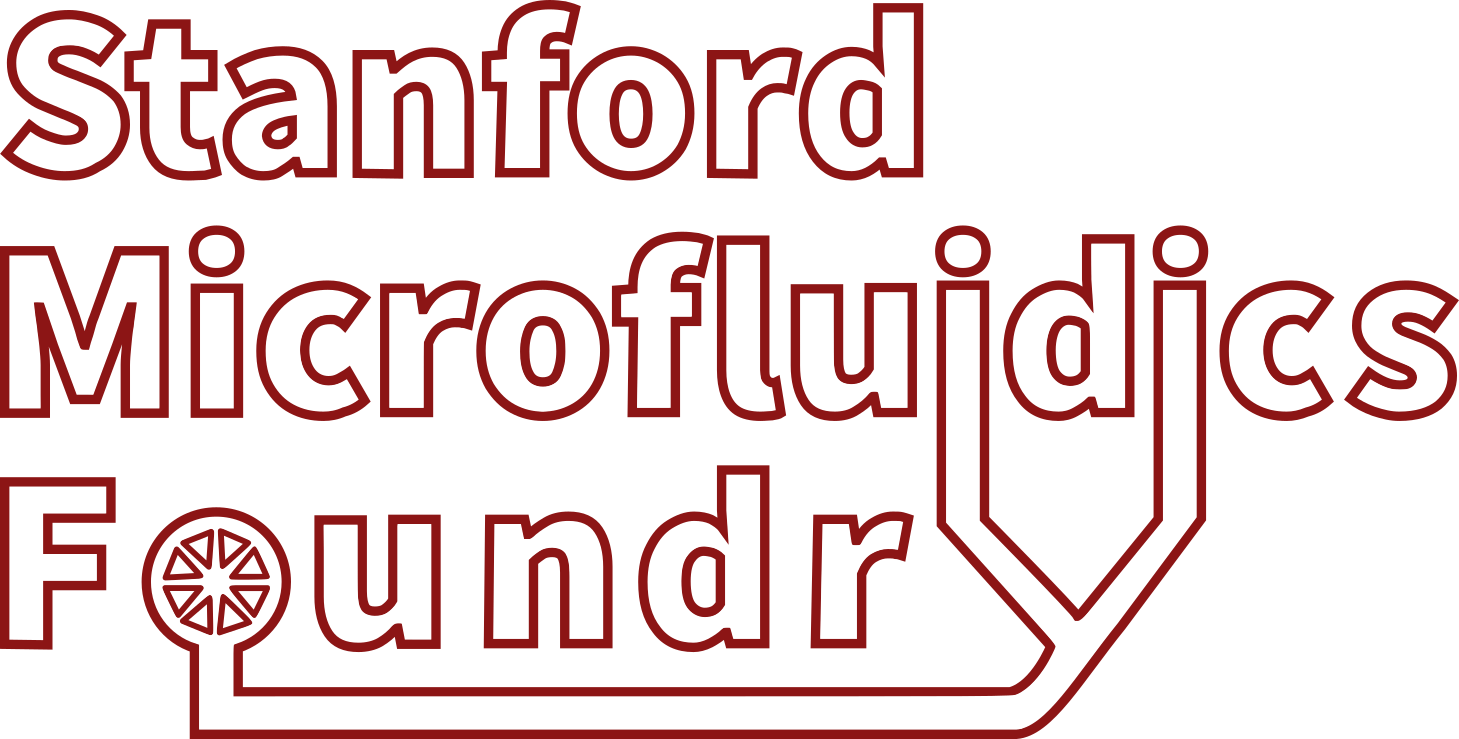Basic Design Tips
Use the AutoCAD template file
It is recommended that you use this file since units and mask sizes are already defined. Refer to Mask Design Tips for more detailed guidelines for your layout.
Standard input/output holes to access the flow and control channels punchers
Fluids and control pressures are introduced by pushing either steel pins + Tygon tubing or PEEK/PE tubing into inlet/outlet holes. 20 gauge holes are standard (0.66 mm diameter, 1 mm radial channel “wagon wheel” design in AutoCAD). Use small (0.3 mm diameter) holes without “wagon wheel” if you want to introduce or collect stuff (beads, cells, worms).
Have a minimum of 2 mm between inputs and outputs.
Remember the 1 to 10 rule: microfluidic channels are typically rectangular cross sections that are 10s of µm deep, 100s of µm wide, and 1000s µm long.
Keep structures with an aspect ratio no lower than 1:10 (height : width)
Structures with lower aspect ratios are prone to collapse. If a feature is wider than this design rule permits, support posts must be added to ensure the aspect ratio is no lower than 1:10 in between posts (i.e. posts every 100um for a 10um high structure). If your device does not call for valves (i.e. it is a simple single layer device), it is not as prone to collapses and lower aspect ratio can be used.
If you don’t have any real constraints, a great place to start is channels that are 100 um wide by 20 um tall.
All devices must be designed with a border indicating where the chip should be cut
Have a minimum of 2-3mm between the device and where you will cut PDMS.
Consider the size of your substrate.
Make sure that your designs fit within your substrate (microscope slide, coverslips, etc.) and leave a minimum of 1-2 mm gap to the edge of each substrate. You can have a construction layer dedicated to the substrates.
Designs must incorporate sufficient tolerances to allow for easy layer/layer registration
Designs must account for alignment tolerances of 30um. This means that the device must be designed to function properly despite 30um errors in alignment in all directions.
All multi-layer/multi-height devices must have alignment marks.
These are included in the AutoCAD template provided.
Avoid sharp corners.
Think about potential dead-volumes and features that can capture bubbles.
